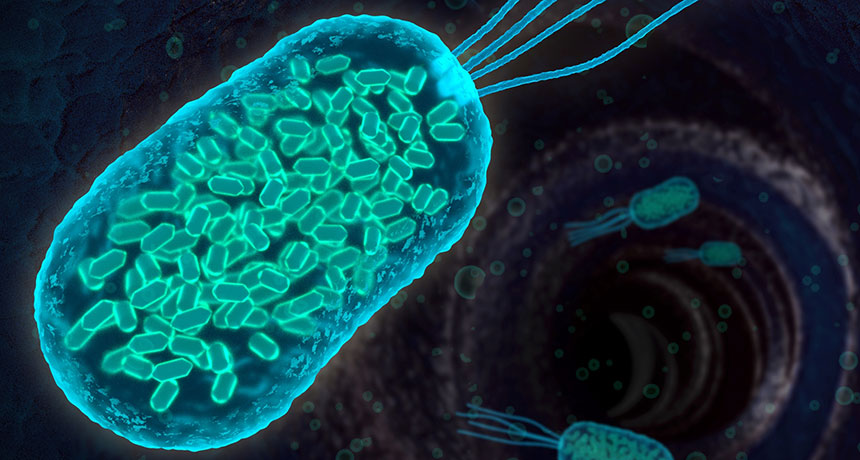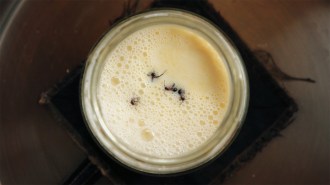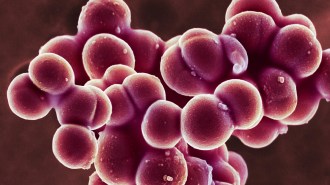These disease-fighting bacteria produce echoes detectable by ultrasound
The technique could help scientists verify if bacterial treatments for some cancers, gut illnesses are working

TAGGING BACTERIA Microbes genetically modified to contain gas-filled protein pouches (illustrated) scatter sound waves, generating ultrasound signals that reveal the microbes’ location within the body.
Barth van Rossum for Caltech








